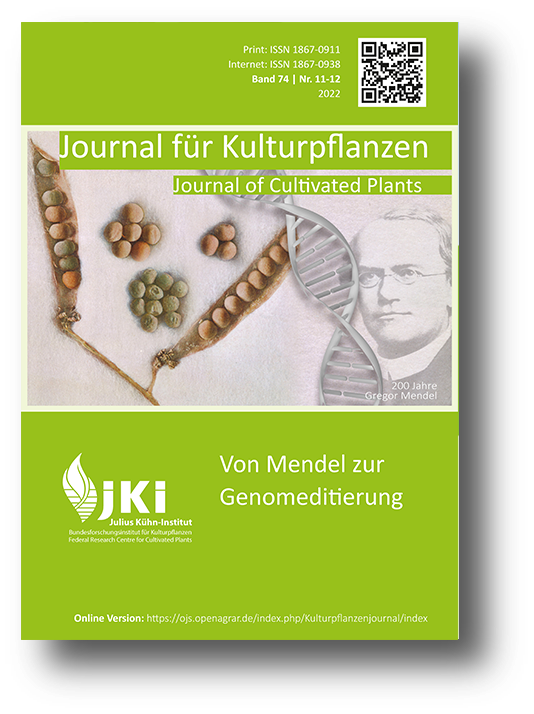200 years Mendel: the grapevine breeding perspective
DOI:
https://doi.org/10.5073/JfK.2022.11-12.05Keywords:
Vitis, grapevine breeding, quality, resistance, phenotypingAbstract
Mendelian rules in grapevine breeding remained hidden for a long time in the complexity of traits and difficulties of handling the crop. A few traits with minor relevance for breeders had been genetically dissected like berry color or autumn leaf color. Mildew resistance and wine quality have been and are still the most relevant traits. Resistant cultivars developed during the first half of the 20th century failed to convince the quality demand of the market. Since the turn of the millennium, a new generation of fungus-resistant new breeds in Germany gives hope to viticulture in times of climate change and a rising debate on sustainability. It took the breeding effort and continuity of generations of breeders, finally far more than 120 years, to provide the market with cultivars convincing with wine quality, the most complex and debated trait in viticulture. Due to a lack of genetic knowledge, selection in grapevine breeding was done mostly without Mendelian genetics schemes. However, the logistic restrictions (field and greenhouse space, labor, and time) in grapevine breeding require efficient selection schemes based on Mendelian traits. In the recent past, marker-assisted selection (MAS) opened a new chapter in grapevine breeding. For many powdery and downy mildew resistance loci MAS is possible today. Using these tools, stacking of resistance loci according to Mendelian rules can be achieved. The concept of developing and using – for resistances – locus-specific homozygous lines (LSH-lines) permits a new attempt to create large progenies and to select the offspring for all traits other than resistance. New markers and selection concepts for more complex traits (e.g. moderate yield, phenology, Botrytis resilience, quality parameters) are urgently needed in practical breeding. Only such tools allow the acceleration of selection at the stage of young seedlings (MAS) and the resulting plants. To that end, newly emerging phenotyping tools are required.
Published
Issue
Section
License
Copyright (c) 2022 Reinhard Töpfer, Oliver Trapp

This work is licensed under a Creative Commons Attribution 4.0 International License.
The content of the journal is licensed under the Creative Commons Attribution 4.0 License. Any user is free to share and adapt (remix, transform, build upon) the content as long as the original publication is attributed (authors, title, year, journal, issue, pages).
The copyright of the published work remains with the authors. The authors grant the Journal of Cultivated Plants, the Julius Kühn-Institut and the OpenAgrar repository the non-exclusive right to distribute and exploit the work.







